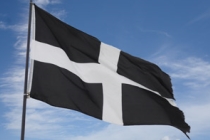Sir Humphry Davy - inventor of the miners safety lamp, founder of Regents Park Zoo, chemist

Humphry Davy was born on the 17th December 1778 in Penzance, the son of a woodcarver .
His interest in scientific things was fostered by his acquaintance with Robert Duncan, a Penzance saddler who made electrical and mechanical models.
He went to school first in Penzance, then to Truro Grammar School when he was 15.
His father, Robert Davy, died, in 1794 leaving a widow and five children without much money.
At 16 he became apprenticed to Dr John Borlase, a Penzance surgeon.
Here his work involved mixing potions in the laboratory.
He set about systematically to prepare himself for a career in medicine by reading widely. Beginning with metaphysics and ethics and passing on to mathematics, then chemistry at the end of 1797, and within a few months of reading Nicholsons and Lavoisiers treatises on chemistry had produced a new theory of light and heat.
Then a chance meeting with a Bristol scientist, Dr Beddoes, led to his being offered a job as assistant in the newly opened Pneumatic Institution in Bristol in 1798.
Within four years he had established himself as a scientist through his experiments with gasses.
Davy became addicted to nitrous oxide (laughing gas), once stating that its properties bestowed all of the benefits of alcohol but without any of it's flaws.
Davy later damaged his eyesight in a laboratory accident with nitrogen trichloride. He nearly killed himself by sniffing a newly discovered gas, and had to return to Penzance to recuperate.
In 1801 he was nominated an assistant lecturer in chemistry at the Royal Institution and in 1803 Fellow of the Royal Society that he would later preside over.
In 1800 Davy used the newly discovered Voltaic Cell battery to separate salts by what is now known as electrolysis. He was able to separate potassium and sodium in 1807 and calcium, strontium, barium, and magnesium in 1808.
He was knighted in 1812, gave a farewell lecture to the Royal Institution, married a wealthy widow, Jane Apreece, and took a long holiday in Europe from 1812 to 1815 (apparently getting special dispensation from Napoleon to do so).
On his return he was asked in 1815 to devise a safety lamp after an explosion had killed 89 miners in a coal mine in Feeling Colliery near Sunderland.
His solution to the problem was elegant, simple and practical.
Wire gauze covered the flame, air passes through the gauze to feed the flame with oxygen, but the explosive gasses, like methane, were held back. Although he patented his invention, he let anybody use it. Apart from his interest in gasses, he was also the founder of the Zoological Society, with its zoo in Regents park.
In 1815 Davy produced a new definition for acids that was used for the next century.
In 1818, he was awarded a baronetcy. And in 1820 was President of the Royal Society, a position he held until 1827.
He died in Geneva, Switzerland aged 51 in May 1829. His various inhalations of chemicals finally taking its toll.
His laboratory assistant Michael Faraday continued his work, and became more celebrated than Davy – Davy is supposed to have claimed Faraday as his greatest discovery.
This article has been kindly provided by Kernow Matters to Us and is part of the series on Famous Folk of Kernow (Cornwall).
- Cornish
- English
- Log in to post comments





